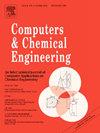Design and analysis of a nuclear and wind-based carbon negative potassium hydroxide water-splitting cycle for hydrogen and ammonia production
IF 3.9
2区 工程技术
Q2 COMPUTER SCIENCE, INTERDISCIPLINARY APPLICATIONS
引用次数: 0
Abstract
To achieve the net-zero target, clean energy sources, carbon-free fuels, and carbon capture are crucial pieces. The current study develops a new potassium hydroxide-based thermochemical water-splitting cycle and combines it with an ammonia export facility with community and data center. A sodium fast reactor and an offshore wind farm are considered to drive the integrated system to generate hydrogen, ammonia, electricity, heating and cooling. The proposed thermochemical water-splitting cycle uses 591 °C heat with a non-equilibrium reaction to generate hydrogen. The generated hydrogen is further used for ammonia generation via high-pressure ammonia reactor and pressure swing adsorption for nitrogen extraction from air. In the integration, sodium fast reactor provides the required heat to carry out integrated processes, where in high-temperature heat is distributed between the thermochemical cycle and the Rankine cycle, and the recovered heat is utilized in further processes. The proposed system is analyzed from thermodynamic aspects using energy and exergy approaches, supported by a parametric study. In addition, a time-dependent analysis is carried out under varying community and data center loads as well as varying wind speed, for each hour in a typical meteorological year. In the proposed integrated system, 230.4 MW of wind farm, 1 GWth of sodium fast reactor, a thermochemical cycle with 3.6 tonnes/hour hydrogen production and 78 tonnes/hour carbon capture capacities, a two-stage Rankine cycle, ammonia generator, and an absorption refrigeration cycle are considered. The energy and exergy efficiencies of newly developed five-step thermochemical cycle are 45.39 % and 62.78 % when reaction temperatures are considered as 240 °C for hydrogen generation and 591 °C for separation. For the integrated system, the overall energy and exergy efficiencies for the entire year are found as 32.61 % and 28.44 %.
求助全文
约1分钟内获得全文
求助全文
来源期刊

Computers & Chemical Engineering
工程技术-工程:化工
CiteScore
8.70
自引率
14.00%
发文量
374
审稿时长
70 days
期刊介绍:
Computers & Chemical Engineering is primarily a journal of record for new developments in the application of computing and systems technology to chemical engineering problems.
 求助内容:
求助内容: 应助结果提醒方式:
应助结果提醒方式:


